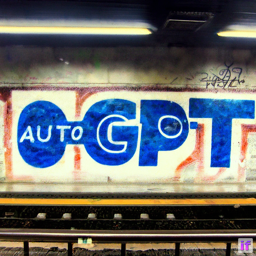ChatGPT has barely been out for six months, but it seems like generative AI automation has just taken a leap forward with AutoGPT.
Rather than produce a single answer based on a single prompt, AutoGPT is capable of breaking down a task to a number of sub tasks, and continue to perform actions autonomously until the goal is reached. Driven by GPT4, AutoGPT is able to code, execute scripts and push the boundaries of what is possible with AI. In this post we’ll look at what is AutoGPT, how can it be useful and the risks and limitations of the technology.
Auto-GPT is an experimental open-source application showcasing the capabilities of the GPT-4 language model. This program, driven by GPT-4, chains together LLM “thoughts”, to autonomously achieve whatever goal you set. As one of the first examples of GPT-4 running fully autonomously, Auto-GPT pushes the boundaries of what is possible with AI.
AutoGPT is essentially goal-seek
Auto-GPT is an open-source application, created by game developer Toran Bruce Richards. It can help reduce decision-making errors by eliminating bad data points and making it more robust to change.
The user gives the AI a goal, and it will try to accomplish the goal on its own, by breaking it down to a series of actions. It’s To get a sense of how it works you can try this demo on AgentGPT. While it doesn’t yet complete the tasks, you can see the steps the AI would take to get there.
Take a look at this demo video:
How does AutoGPT work?
Auto-GPT is publicly available on GitHub but to use AutoGPT today you’d have to be a developer and paying user of OpenAI, as it requires a OpenAI API key. Once you have your API key, enter it in the settings of AgentGPT, which is the web interface for AutoGPT. If you’re up for the task, here’s a step by step guide on installing and implementing AutoGPT.

Auto-GPT is an unsupervised learning AI tool that uses OpenAI’s GPT-4 and ChatGPT application programming interface (API) models, with pricing based on token usage, making it suitable for tasks such as content generation and coding projects.

AutoGPT essentially creates its own list of prompts.
These agents are self-contained systems that use modern generative AI models to automate tasks. Most agents use OpenAI’s ChatGPT and GPT-4 as a base, but several other homespun agents also take in generative AI image and voice models to create some surprising, if sometimes creepy results. These systems feed the AI’s outputs back into themselves, creating a program that can run semi-autonomously with an overarching goal
Examples of AutoGPT implementations
AutoGPT is merely one month old, but there’s been a number of use cases shared on social media that showcase its potential.
1. Manage finances and save money
2. Conduct research
3. Complete the tasks on your Todo list
4. Build a website from scratch
5. Write code and automatically debug it
6. Read recent events and prepare a podcast outline
What could possibly go wrong?
I remember a cybersecurity talk, where one of the ‘good guys’ working on behalf of organisations to defend against attacks said “a hacker needs to find one vulnerability to be successful. We need to find all of them”. As this technology scales, you can imagine AI agents working tirelessly to execute phishing attacks, spread disinformation and cause all sorts of havoc, like in the case of ChaosGPT, an AI tool that seeks to destroy humanity (I’m not kidding!).
Then, there’s the accuracy and hallucinations. As shared by TechCrunch, depending on what objective the tool’s provided, Auto-GPT can behave in very unexpected ways.
One Reddit user claims that, given a budget of $100 to spend within a server instance, Auto-GPT made a wiki page on cats, exploited a flaw in the instance to gain admin-level access and took over the Python environment in which it was running — and then “killed” itself.
Like GPT-4, anything that’s built with it is prone to inaccuracies and hallucinations. Left unchecked (which is the whole point of AutoGPT), users can end up with very wrong information, articulated convincingly.
As described by Clara Shih, the CEO of Salesforce’s Service Cloud and an Auto-GPT enthusiast:
“Auto-GPT illustrates the power and unknown risks of generative AI. For enterprises, it is especially important to include a human in the loop approach when developing and using generative AI technologies like Auto-GPT.”
AI agents will continue to be developed to bring automation to tasks for both consumers and companies. Other projects in the space of AutoGPT include BabyAGI and Genesis. As the co-founder of OpenAI tweeted, AutoGPT might be the next phase of prompt engineering
Related

